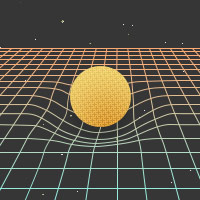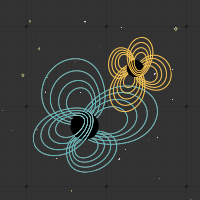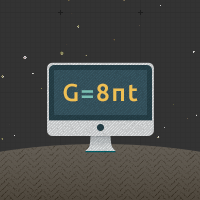S
S
Singularity
A point at which the curvature of spacetime becomes infinite. Singularities can form — for example — when too much matter is squeezed into a region which is too small. Singularities are found at the center of a Black Hole, at the beginning of the Universe in the Big Bang, and at the end of the Universe (if it ever comes) in the Big Crunch. Many scientists believe — though there is no solid evidence — that all singularities in the present Universe lie hidden behind Event Horizons. This is the "Cosmic Censorship Conjecture".
Singularity Theorem
A theorem (a mathematically proven fact) which shows that a singularity must exist under certain circumstances. For example, physicists have shown that the Universe must have begun with a singularity.
Spacetime
A concept in physics which merges our usual notion of space with our usual notion of time.
Special Theory of Relativity
Einstein's version of the laws of physics, when there is no gravity. The two fundamental concepts in the foundation of this theory are equality of observers, and the constancy of the speed of light. The first of these means that the laws of physics must be the same, no matter how quickly an observer is moving. The second means that everyone measures the exact same speed of light. This theory is useful whenever the effects of gravity can be ignored, but objects are moving at nearly the speed of light. It has been successfully tested many times in particle accelerators, and orbiting spacecraft. For objects moving much more slowly than light, Special Relativity becomes very nearly the same as Newton's theory, which is much easier to use.
Speed
For a wave, the speed of a particular point (such as its crest).
Speed of Light
A constant of Nature. This speed is precisely 299,792,458 meters per second, or roughly 670,616,629 miles per hour. One of the most unusual discoveries of science has been the fact that all Observers measure light as moving at exactly this speed, even if those observers are moving relative to each other. This fact is one of the basic ingredients in Einstein's Special Theory of Relativity.
Spin
An intrinsic property of particles. (That is, a property which does not change. Mass and electric charge are examples of intrinsic properties.) Spin is related to the usual notion of spin, though it is a little more difficult to understand. Spin comes in units of 1/2, so that a particle may have a spin of 0, 1/2, 1, 3/2, and so on. A particle's spin determines whether it is a Fermion or a Boson.
Stochastic
Pertaining to a process involving a randomly-determined sequence of observations.
String
The fundamental object in String Theory, which replaces the notion of a particle in standard Quantum Mechanics. Rather than being a simple point-like object, fundamental particles become tiny strings or loops. The vibrations of these strings result in various properties like spin.
String Theory
A theory of physics taking the String as its fundamental object. This theory attempts to solve problems in standard Quantum Mechanics and Quantum Field Theory. It actually predicts the existence of gravity.
Supernova
Violently exploding stars which shine very brightly for days or weeks. They occur when the fuel for nuclear reactions is used up, and a star cools. Gravity pulls all the matter down toward the star's center. If this happens quickly, nuclear reactions may suddenly begin again, detonating the star in a nuclear explosion.
Superstring
Another name for a "Supersymmetric String", which is usually referred to simply as a String.
Sympathetic Resonance
A phenomenon in which an object with a natural resonant frequency is excited by the vibrations of another object vibrating at the same frequency. For example, a singer breaking a wine glass with her voice demonstrates an extreme sympathetic vibration of the glass, excited by the vibrations of the singer's voice.




